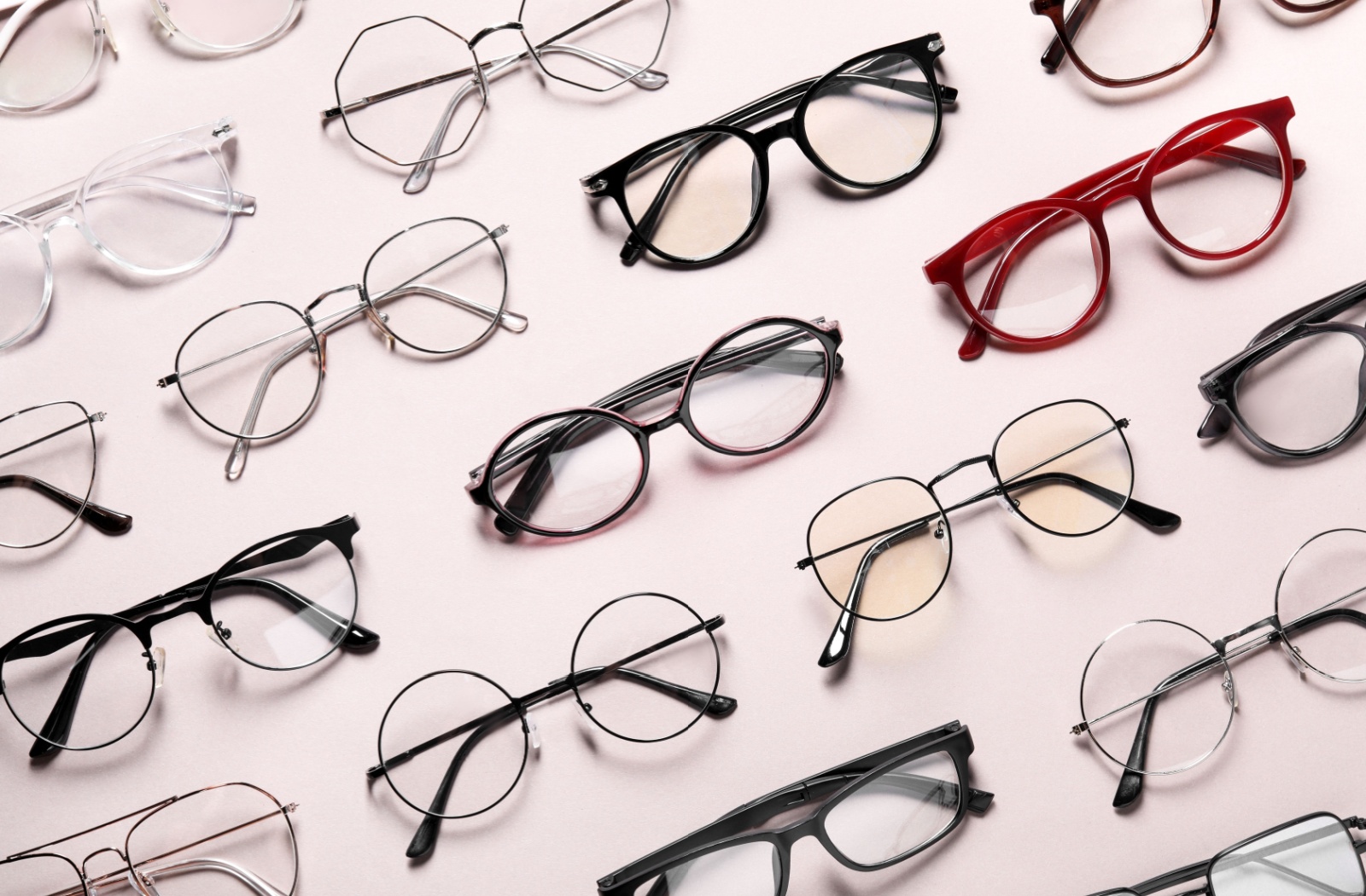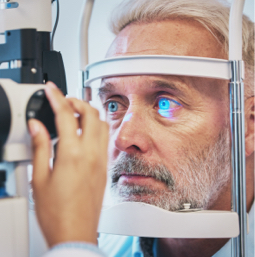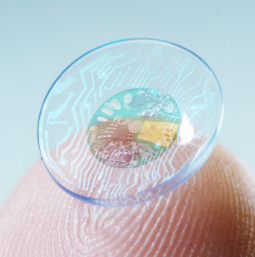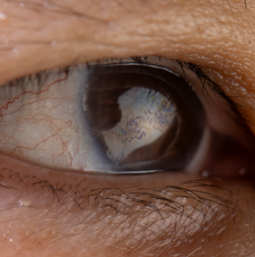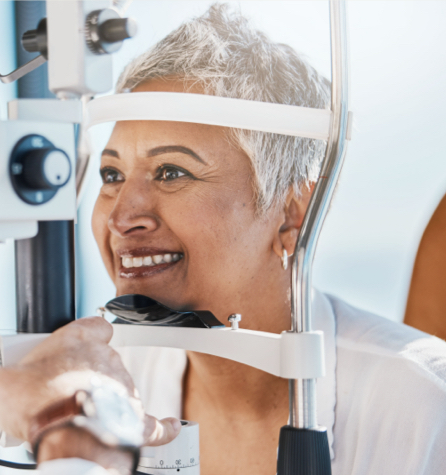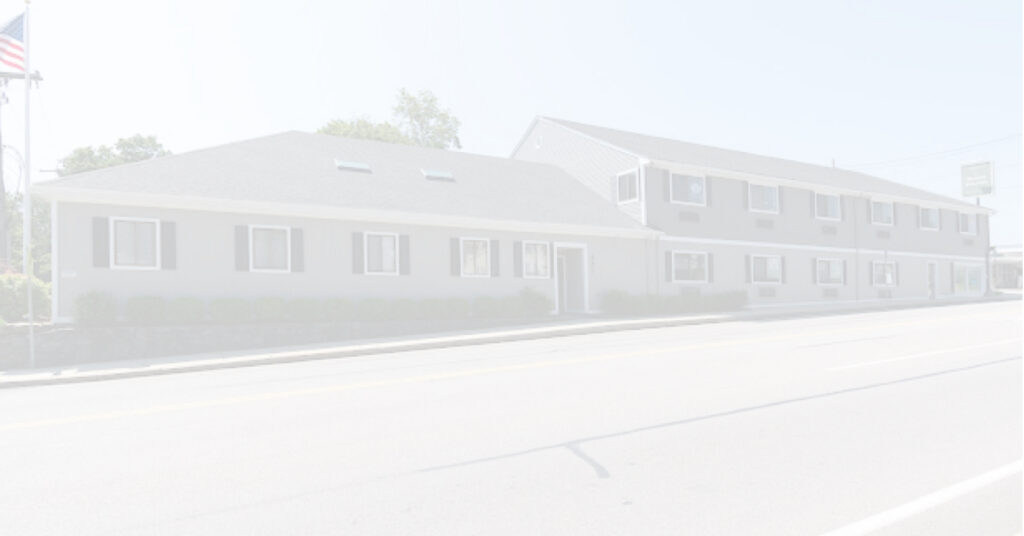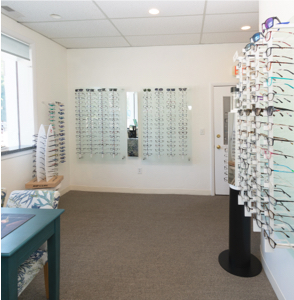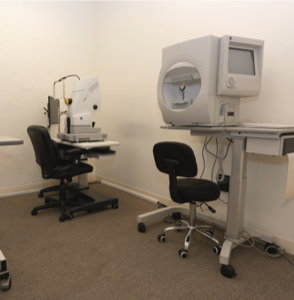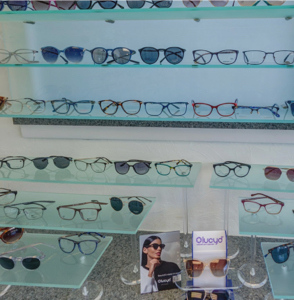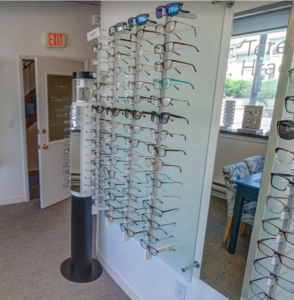Many different kinds of lenses can be used in eyeglasses. However, some lenses can seem like they do the same thing. This can make it confusing to choose the lenses that are best for you. Your optometrist will be able to help you find which lens is best for you by performing a comprehensive eye exam.
Three kinds of lenses that can seem similar are bifocal lenses, progressive lenses, and transition lenses. The difference between these three lenses are:
- Bifocal lenses contain two different prescriptions. These prescriptions are divided by a visible horizontal line across the lens.
- Progressive lenses also have two different prescriptions. However, in progressive lenses, the horizontal line used in bifocals is not present; instead, the two areas are blended smoothly.
- Transition lenses darken when exposed to sunlight, but become clear when you’re inside.
Bifocal Lenses
What Are Bifocal Lenses?
A bifocal lens has two different optical powers. This means that they can be used to correct more than one kind of vision problem at a time. The two different sections are divided by a visible line on the lens.
Most of the time, the top section of a bifocal lens is used to see objects at a distance (the distance-vision zone), and the lower section (called the near-vision zone) is used for reading or seeing close-up objects.
The size of the bottom area of the lens may vary. Consult an eye care professional to find the best bifocal shape for you. Common bifocal shapes include:
- Executive: The near-vision zone covers the bottom half of the lens.
- Flat top: The near-vision zone only covers the inside of the bottom half of the lens, in a “half-moon” shape.
- Ribbon: The near-vision zone is a small rectangle across the bottom of the lens.
- Round top: The near-vision zone is a small circle at the bottom of the lens.
Pros of Bifocal Lenses
- You only need one pair of glasses instead of two!
- Bifocals lenses may feel more comfortable to wear than progressive lenses for some people.
Cons of Bifocal Lenses
- “Image jumps” can occur when looking at an object and transitioning from the bottom of the bifocal lens to the top.
- Provide no intermediate vision
- A small number of people may experience blurry vision or headaches when wearing bifocals. If this happens, consult your eye care provider immediately.
Who Needs Bifocal Lenses?
Bifocal lenses can be prescribed to people who are nearsighted or farsighted, but who have also developed presbyopia. Such individuals require prescription glasses needed for reading at both near-distances and far distances.
Progressive Lenses
What Are Progressive Lenses?
Progressive lenses have continual optical power change. The transition between the different sections in progressive lenses is smooth. This means that, unlike bifocals, they do not have a visible line across the lens.
Pros of Progressive Lenses
- Looking at objects that are at a middle distance is easier with progressive lenses than with bifocals due to the smooth transition between zones, as bifocals do not have any intermediate vision.
- The smooth transition between near and distance vision zones means no vision jumps.
Cons of Progressive Lenses
- It may take longer to train yourself on how to use progressive lenses due to there not being a clear line distinguishing between the near and distance-vision zones.
- Headaches and nausea may occur when first wearing progressive lenses. If this happens, consult your eye care provider immediately.
Who Needs Progressive Lenses?
Progressive lenses are prescribed to the same kinds of people who use bifocal lenses. These are people who need glasses to see both near and mid-far distances.

Transition Lenses
What Are Transition Lenses?
Transition lenses, or “photochromatic lenses,” are prescription lenses that get darker or lighter depending on the lighting of an area. Transition lenses are a great option for individuals who do not want to switch between prescription sunglasses and eyeglasses with clear lenses.
Bifocal transition lenses and progressive transition lenses exist, so you can have the best of both worlds. At Rock optiX, we offer a range of quality frame and lens options, so contact us if you think that transition lenses are right for you.
Pros of Transition Lenses
- You will no longer need two pairs of prescription glasses.
- They offer UV protection for your eyes.
Cons of Transition Lenses
- They take longer to adjust in cold weather.
- They might not darken as well inside cars due to UV protection in car windows.
Who Needs Transition Lenses
Transition lenses are great for people who spend a lot of time moving between indoor and outdoor locations. They are also a good option for children, who may forget to change their glasses and are more likely to lose their glasses when switching frequently between different pairs.
Finding the Right Lenses for You
Choosing the right lenses for you may seem overwhelming, but our knowledgeable staff at Rock optiX is more than happy to walk you through all of your options. We carry a variety of eyeglasses and sunglasses, so whether you choose transition lenses or not, you can leave with a pair of glasses that you love.

